Interview: Radnor Design Studio Founder, Susan Clark
In collaboration with architect Elizabeth Roberts, the brand presents 4,000 square feet of art and design at 180 East 88th

A designer and facilitator of design, Susan Clark founded Radnor in 2016 as a gallery platform to introduce emerging talent and as a studio to develop well-made collaborative pieces. This retailer-manufacturer hybrid is filtered through Clark’s elevated vision, which brings together elements of art, design and craft. From her Gowanus studio, Clark explores dimensions, materials and prototypes; from the serene showroom that she designed in collaboration with architect Elizabeth Roberts, which occupies a full floor of 180 East 88, she infuses the architecture with a vision of elegant, modern living.
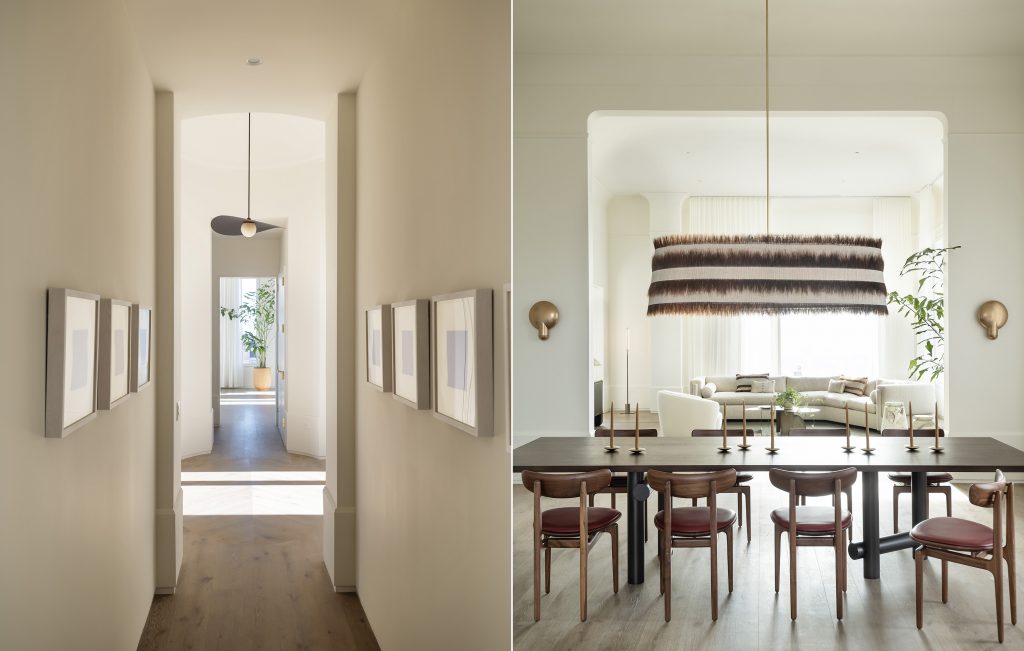
“I’m rooted in the tradition of craft and fabrication. I was born and raised in Nashville, Tennessee. I spent a lot of years traveling across the country with my father, who was a structural engineer, learning about materiality through the natural world,” Clark tells us. “Coming back to traditional materials has long been a driving force for me.” Clark studied at the Appalachian Center for Craft, in the woods of Tennessee, and studied everything from blacksmithing to CNC machining, weaving and glassblowing. Soon after, Clark became a professional glassblower in Seattle.

Clark ventured to NYC for a masters at Parson, where she learned the digital aspects of design and fabrication. There, she “started to see differences between the craft and design communities,” she tells us. “I wanted to pursue the intersection of those communities; I wanted to explore how they can be combined.” Clark would join the team at Workstead as a lighting design consultant and became involved in the world of interior design, too. There she learned that her heart was in product development and “the gratification of developing one form.”
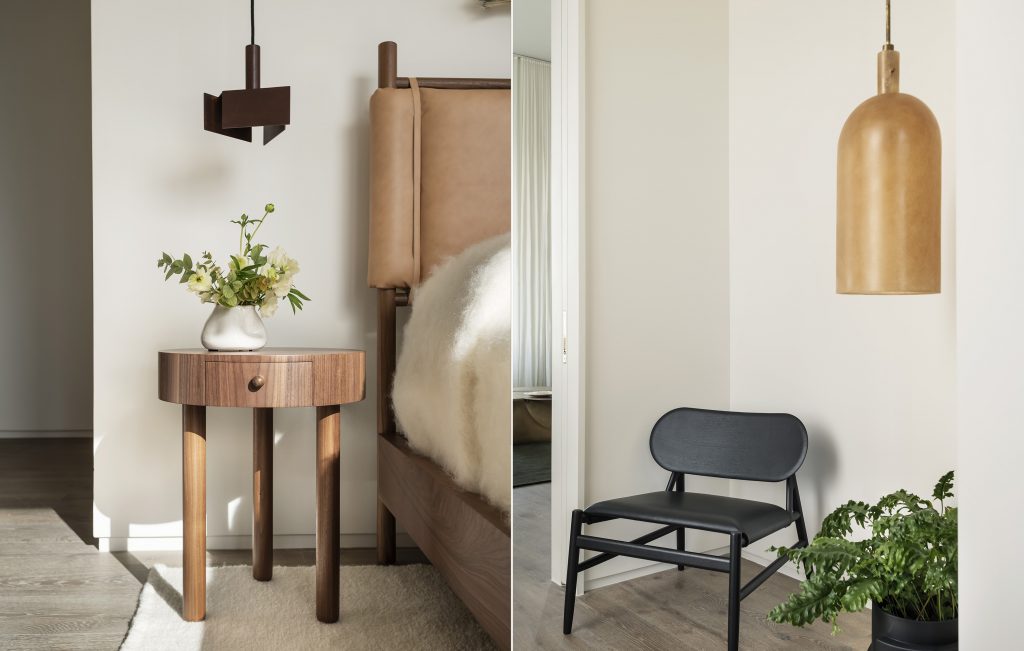
At Studio Melissa Cicetti, Clark worked on the home of artist Richard Serra, as well as the Brant Foundation and the Brant’s TriBeCa home. There, she fostered a loved of working with the architecture—still, she knew she was a “product person.” The Future Perfect became the first place to carry Clark’s work. She joined them as head of sales and product development and it became a training ground for her to test theories until she went out on her own.
“I still did not know if it would be in Nashville or New York,” she says of starting Radnor, “but even though my heart wanted a truck and some dogs, I couldn’t deny what this city was giving me as a creative. I was like, ‘Alright, I will stay and build this company.'”

“I knew I wanted to support my craft community and I did not want to be isolated in making,” she says. “In the craft community, you are a team. You are dancing with one another. You are bartering your time and evolving skill sets. I wanted to make sure the company I built had that ethos.” With this in mind, she became determined to represent makers and designers, to pull from her craft community, to blend it all together.
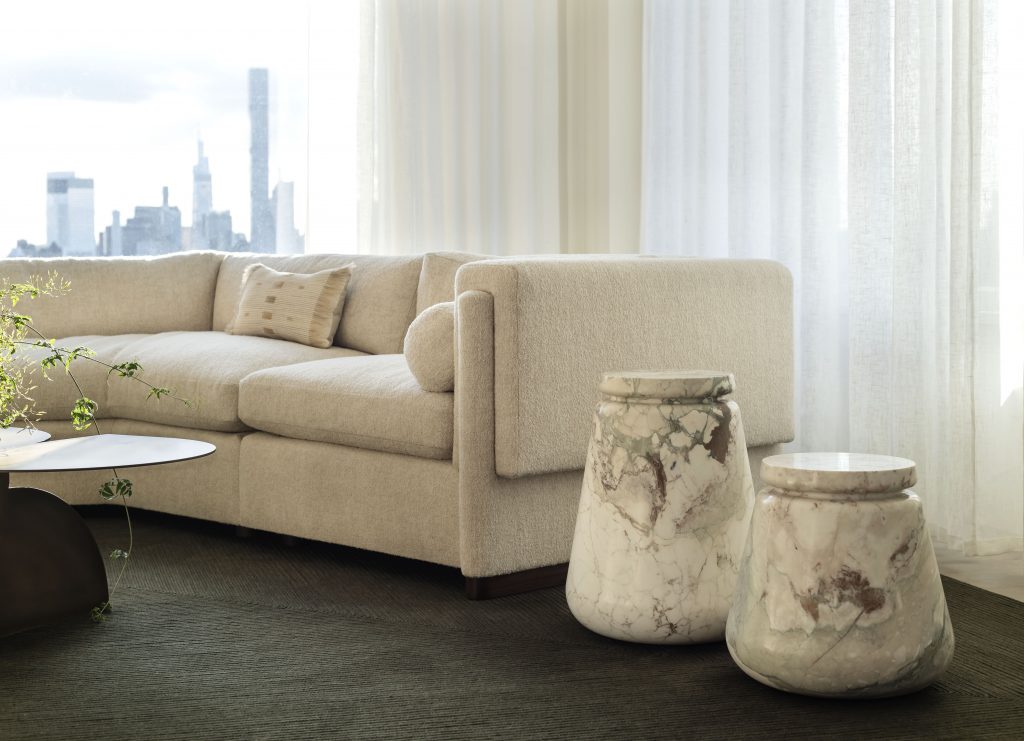
To glimpse the 180 East 88 showroom (which is open by appointment) is to understand the Radnor aesthetic, energy and ethos. But it’s not the first unexpected experiential showroom space from the brand.
“The overhead of a storefront in NYC is exponential,” Clark explains. “Radnor, it’s me and my life savings, so I was debating how to do this. Experimental pieces need context. It’s easier for my clients (98% of whom are interior designers) to understand what we have if they can see how to use it. I believe when you enter a home or walk into a space with exquisitely-crafted handmade objects, this experience has physiological ramifications. You sit with a piece and slowly unpack its layers. You do not get that in a traditional showroom.”
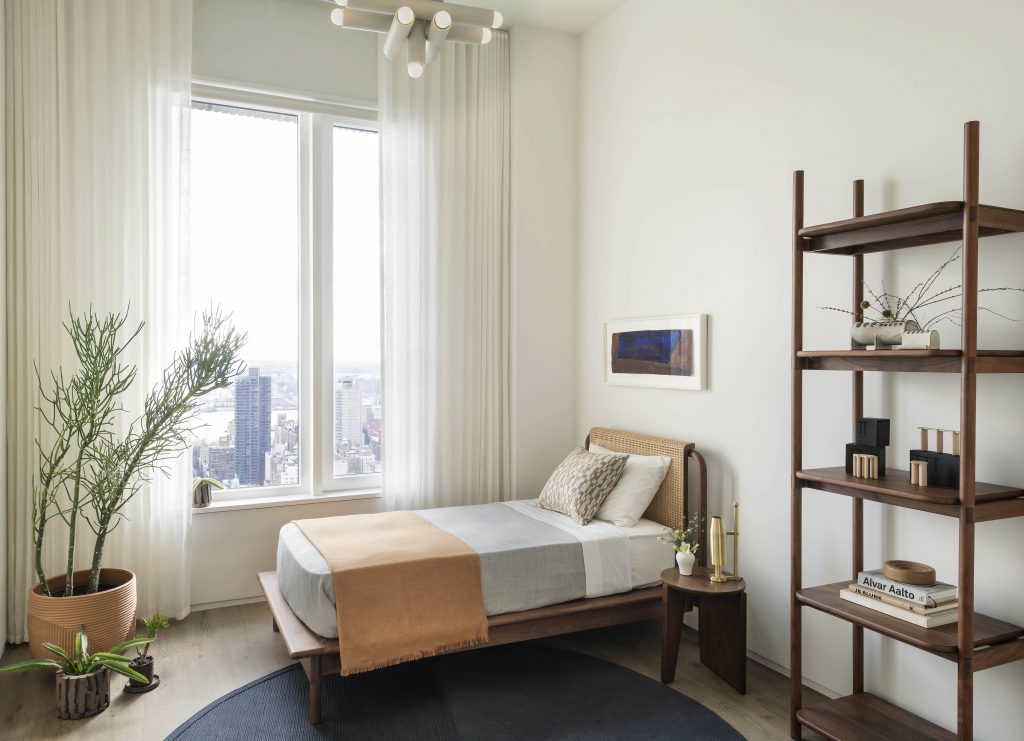
In her pursuit of alternative spaces, Clark begins with co-curators. “The first showroom I did, at The Bryant, was with Workstead. Ryan Mahoney, the head of the interiors and architecture, is basically my brother. It was like working with family—when working with family means sharing a sort of shorthand, where you can jump ahead because you understand each other.” Radnor and Workstead worked together to pull tones out of the David Chipperfield building’s terrazzo.
Not only was it show-stopping for visitors, it was also informative for Radnor. “All of a sudden, we were in this environment that we were creating products for, and we could see what we needed to make next.” For instance, the Halyard rug collection was developed with Bunn Studio specially for this showroom.
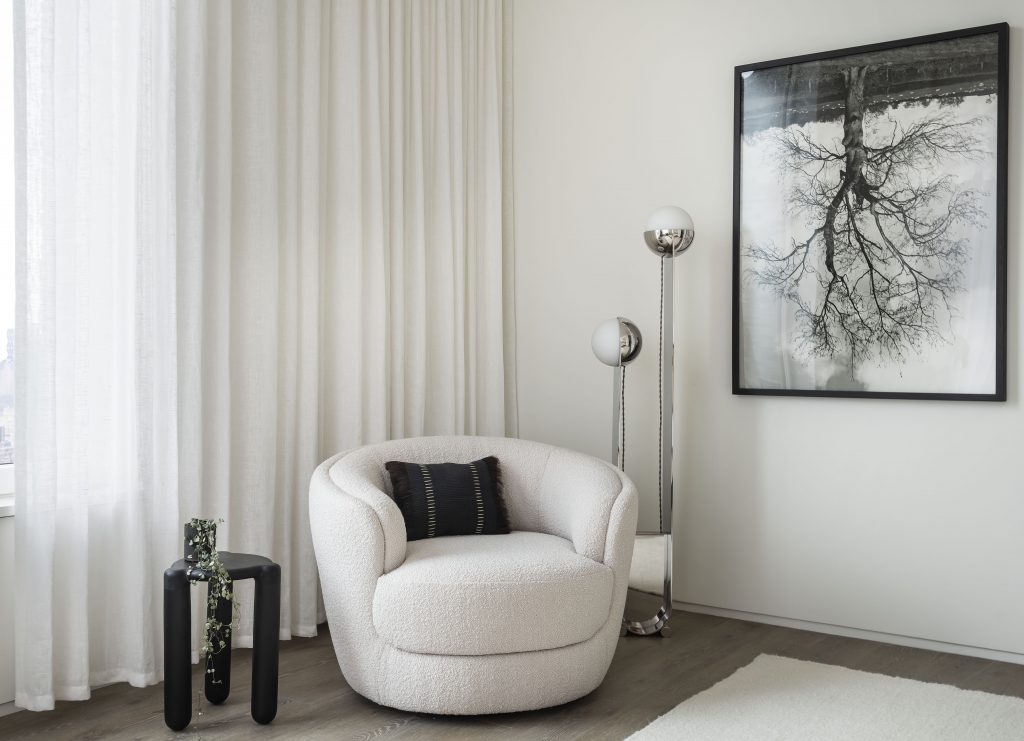
Clark spent a year-and-a-half with Roberts looking for a showroom space. With 180 East 88, Radnor doubled their square footage—from 2,000 to 4,000. Both women wanted a space where they could demonstrate how people live with art and design—how someone could feed their wellbeing with these attributes. From its hand-formed brick masonry to the nod to various traditional crafts, the building spoke to Clark.
Then the two collaborated on Roberts’ first-ever furniture collection, called Triad and including a desk and side table. “You get heavy, boxy side tables that are like miniature dressers or you get minimal tables,” Clark explains. “There’s never one with just a drawer. For Elizabeth, it was about designing through a lot of form studies. Then we had a lot of back and forth on the craft behind it.” The resulting pieces demonstrate their intense appreciation for materials.

The Triad collection is one example of Radnor Made, the division of Clark’s company that develops and produces furniture and decor. For this, she says, “I will have an objective in mind. I have a very specific agenda. It needs to be the standard specs that interior designers are looking for.” Also from Radnor Made, on site, is Adam Rogers’ walnut Alder Bed, Bunn Studio’s Beau Sofa and Beau Lounge Chair, and Karl Zahn’s Parallax Tables from bent bronze sheets. Clark partnered with Alexandra Kohl for their first-ever collaborative piece, the Philippa Horsehair Dining Room Pendant. One will also find Core Tables which represent the first time Clark designed something entirely on her own. They are milled from one block of natural stone, then cored the center.
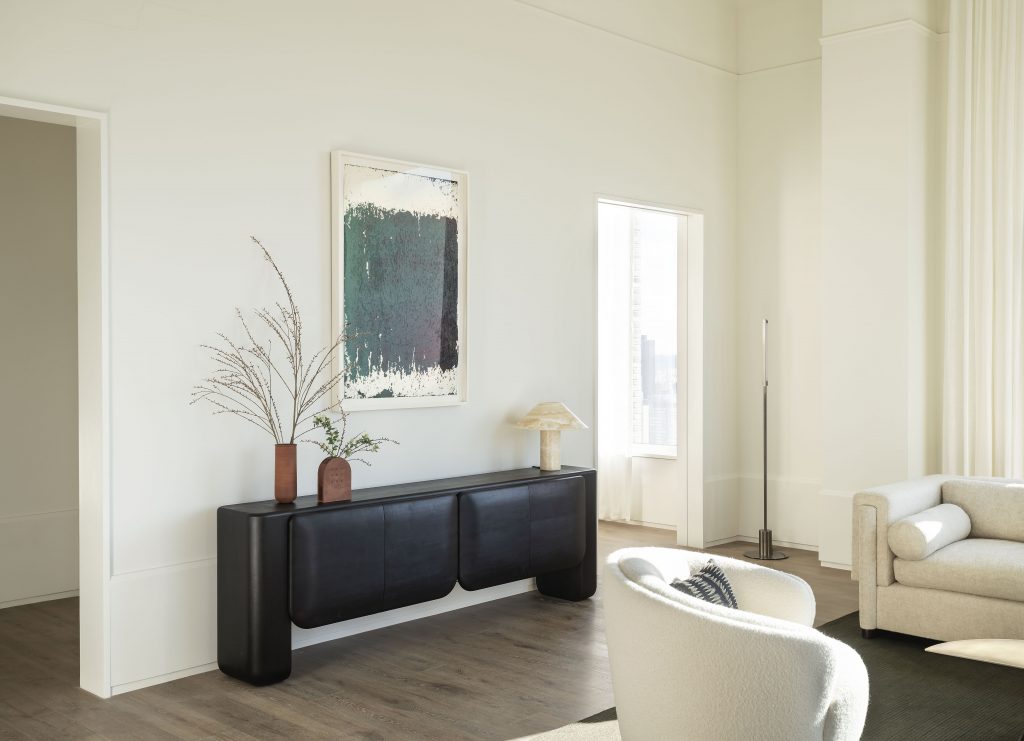
In addition to Radnor Made, there’s Radnor Represented, which includes exclusive items from artisans. Clark’s enthusiasm for Montreal-based cabinet and furniture maker Loïc Bard is tactile—and understandable. Everything Bard makes is in limited, numbered editions. The blackened maple Bone Credenza 01 is an undeniable standout. There’s also the hand-cast fiberglass pebble pendant by Mexican studio Tezontle (named after volcanic Oaxacan material). All items, despite their diverse origins, work well together.
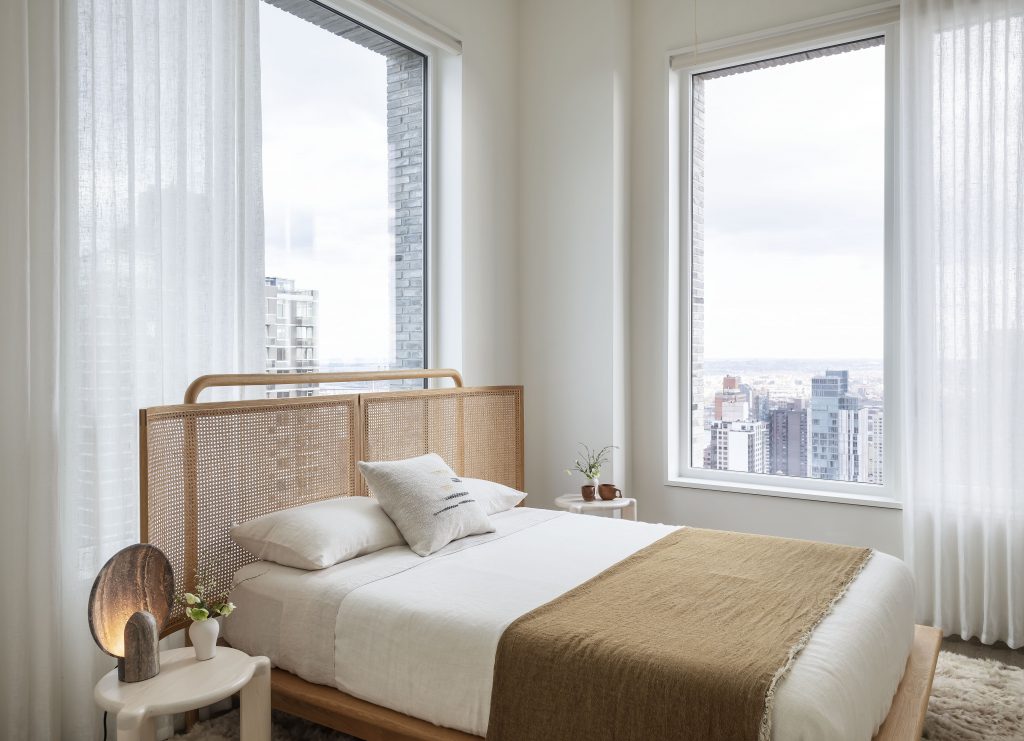
To accompany the exemplary design, the space features art from David Zwirner Gallery. “Elizabeth has a personal relationship with Bellatrix Hubert [senior partner] at David Zwirner,” Clark says. “We went in for a meeting and I told her that we would be interested in doing whatever she’d like to do. It turned out she had been following Radnor on Instagram. She said she’d be delighted to participate. There is an interest from the art world to integrate with all other elements of the home and that’s what we are doing.” Hubert curated work by Serra, Ruth Asawa, Suzan Frecon and others. It’s a final component to the holistic showroom experience.

Many people associate the word design with the idea of polished, high-end items, but craft with being roughly hewn, imperfect and lower-end. Clark believes that one cannot exist without the other. “If you come from a design background but never understand the craft vocabulary, one that you need to communicate in, then you do not understand the traditional fabrication techniques and you are beholden to a collaborator. It is necessary to understand craft to create design at a different level.” At 180 East 88, visitors will find exquisite design informed by heritage, need and expertise.
Images by Matthew Williams, courtesy of Radnor












